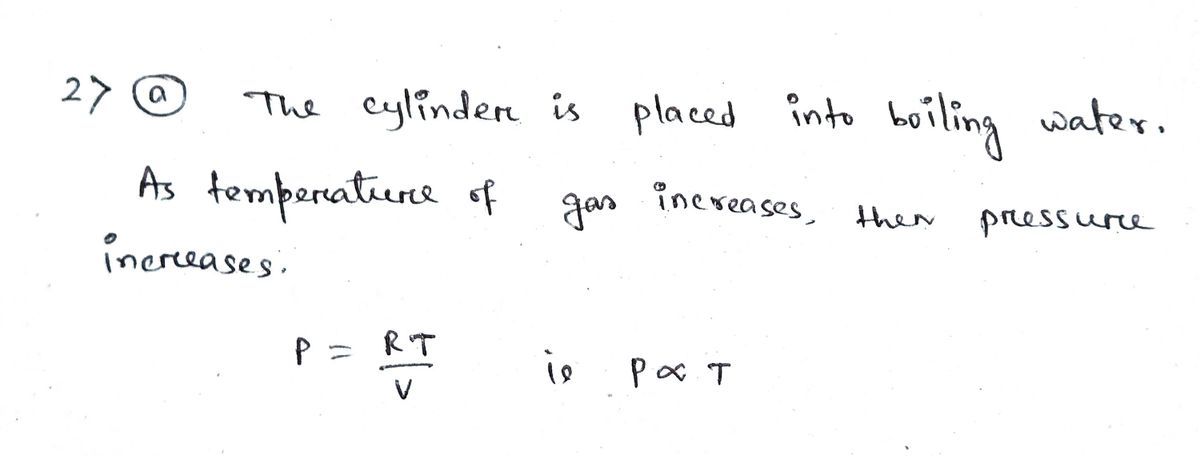92 2. A long pin is used to hold the piston in place as shown in the diagram. The hw bbnilve cylinder is then placed into boiling water. vis a. Does the temperature of the gas increase, decrease, or remain the same? Explain. Ideal gas noig i b bad bensa elndi reled boemnib viod-nt ow banage et ov b. Sketch this process in the PV diagram at right. c. Explain why for this particular situation, it is not possible to determine the pressure of the gas as you did on page 1 of the tutorial (i.e., by considering a free-body diagram of the piston). Taitini odl oi с. 1o o285.fonit orha bawalla o didw ban t li blod s be 25iliacup o l doirdw 22001g eiti al
Kinetic Theory of Gas
The Kinetic Theory of gases is a classical model of gases, according to which gases are composed of molecules/particles that are in random motion. While undergoing this random motion, kinetic energy in molecules can assume random velocity across all directions. It also says that the constituent particles/molecules undergo elastic collision, which means that the total kinetic energy remains constant before and after the collision. The average kinetic energy of the particles also determines the pressure of the gas.
P-V Diagram
A P-V diagram is a very important tool of the branch of physics known as thermodynamics, which is used to analyze the working and hence the efficiency of thermodynamic engines. As the name suggests, it is used to measure the changes in pressure (P) and volume (V) corresponding to the thermodynamic system under study. The P-V diagram is used as an indicator diagram to control the given thermodynamic system.


Trending now
This is a popular solution!
Step by step
Solved in 2 steps with 2 images









